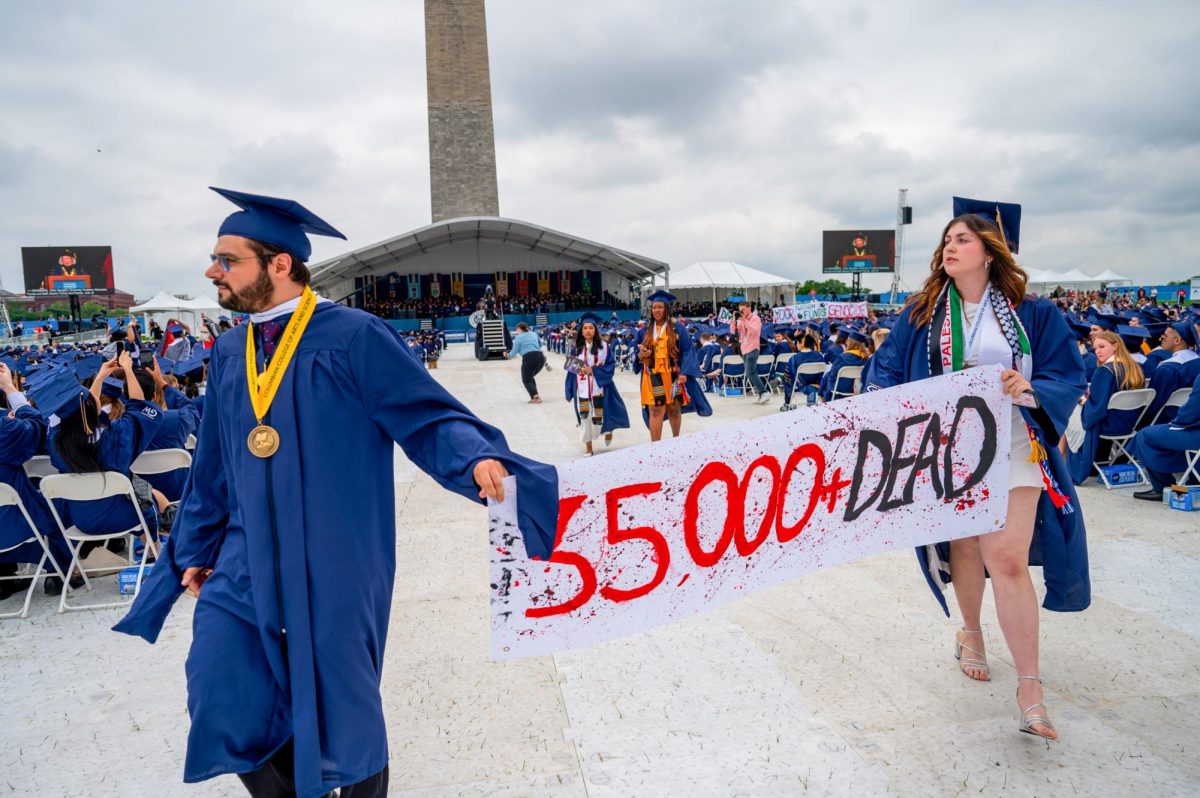For a class earlier this year, sophomore Norma Chamma observed emergency department doctors packing boils and suturing wounds. She is not a medical school student and did not paticipate in treating the patient.
Chamma is a student in GW’s emergency medical scribe course, which prepares undergraduate students to be assistants in a hospital emergency department setting and requires them to spend four hours each week in the ER.
“It’s a synergy of training scribes plus giving students on campus a clinical experience which is really not available anywhere else,” said Neal Sikka, the professor and creator of the course. “This offers a lot of opportunities for the whole class, and a broad experience. It’s more varied than just shadowing one doctor.”
Sikka and Larissa May, an instructor in emergency medicine, work together to deliver lectures and grade assignments for the scribe class. Both GW professors are also doctors within the GW Hospital emergency department.
Although scribe duties are traditionally carried out on a clipboard, Sikka and May’s class uses the computer program IBEX to teach students how to use an electronic health record. Since the GW Hospital utilizes this technology in their emergency department, students that complete the scribe program may be eligible to take on jobs as scribes at the hospital.
Emergency department scribes obtain incoming patient information and deal with everything from billing to tending minor wounds and patient problems.
“It gives (students) the opportunity to get into their clinical experience and see what it really means to be a health care provider,” Sikka said. “They see the atmosphere of the emergency department in the hospital.and they also get an introduction to medical terminology. It’s almost a head start to med school, where you learn a different language.”
Sikka said, “Students had the idea that they would like to be scribes and we had the idea of hiring scribes, so we actually worked . to train people who are pre-med to be scribes.”
Sikka developed the program in November 2005. In the spring of 2006, he taught the course with a handful of students by using a training manual and visits to both the ER and with Sikka in order to complete the course material. By fall 2006 the course was up and running with a capacity crowd. Sikka recruited May to teach after leading the course for two semesters.
“The class gives students a leg up,” May said. “It gives them a first-hand look at a clinical environment and helps in deciding where a career in medicine is for them.”
Andrew Ritter, a junior in the class, agreed with May.
“Having experience in an ER will be huge,” Ritter said. “Hopefully on my resume it will be a leg up.”
Chamma said that the time she has been assigned to observe the emergency room has been worthwhile.
“Because I am especially interested in the interactions with patients and the actual diagnosing and treatment of patients, I found this experience particularly fascinating,” Chamma said. “The clinicals have also helped me become much more sure about making a decision to go into a career in medicine.”






